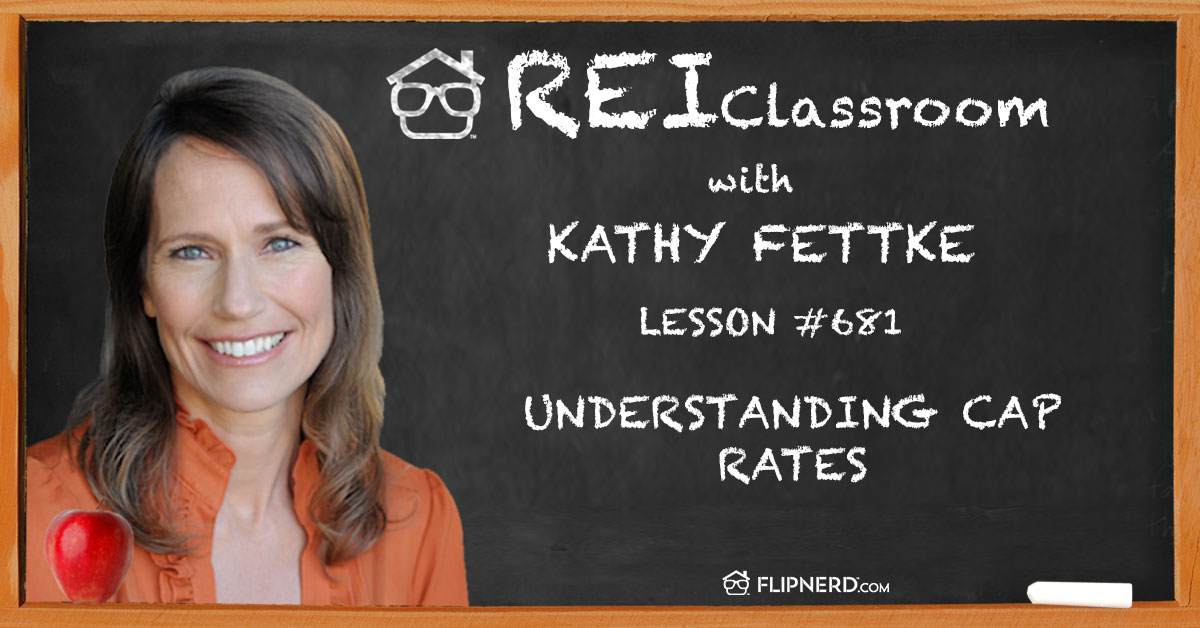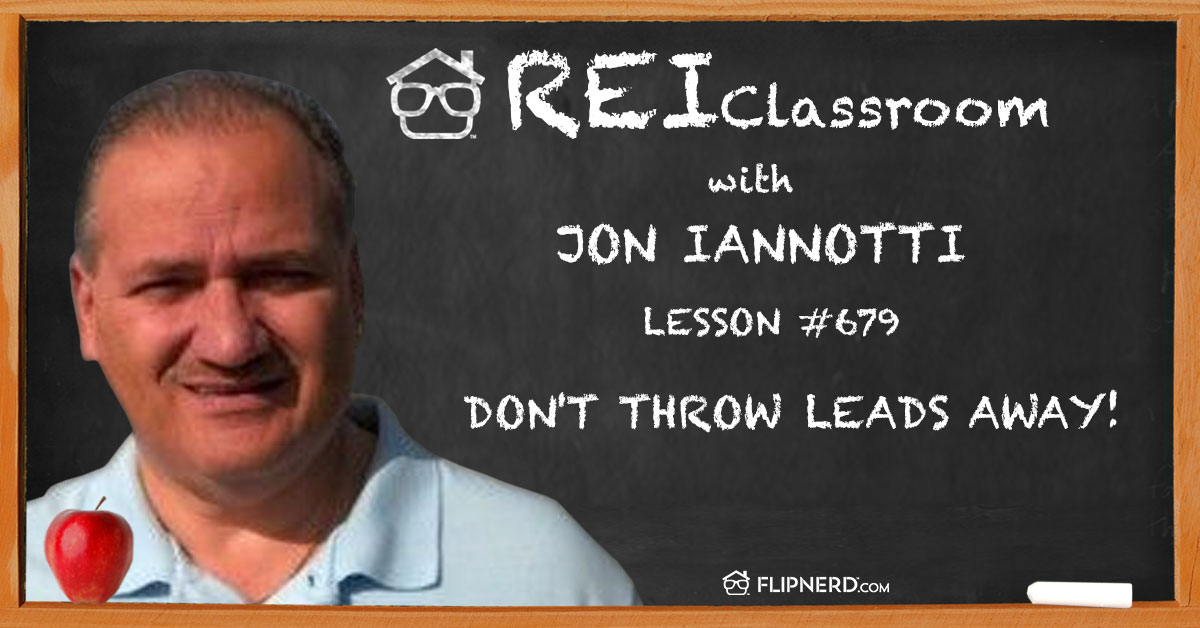Today’s REI Classroom Lesson
When it comes to rehabbing, Darrell Kucan knows exactly what to look at in order to assess the value and determine what needs to be repaired.
REI Classroom Summary
Darrell Kucan explains how to walk a property correctly and how to handle contractors in order to protect your profit.
Listen to this REI Classroom Lesson
Real Estate Investing Classroom Show Transcripts:
Mike: Welcome back to the FlipNerd.com REI Classroom where experts from across the real estate investing industry teach you quick lessons to take your business to the next level. And now, let’s meet today’s expert host.
Darrell: Hey, welcome back. My name is Darrell Kucan. I will be your host today for the REI Classroom show. My company is Kucan & Clark Partners and I run the San Diego Investment Club along with my business partner. What we do is we help teach and educate people on the how-tos of real estate investing. Today, we’re going to talk about rehabbing. We’re going to talk about fixing a place and a little bit about the dos and don’ts of it.
Mike: This REI Classroom real estate lesson is sponsored by VirtualStaffNow.com.
Darrell: So when looking at a property to rehab, I mean, the first thing you’re going to obviously want to do is evaluate the property and come up with a budget. Because we all know that you make your money when you buy a property right. Well, let’s just assume that the property meets all criteria.
So in order to get into a rehab, you’re going to want to come up with a budget. There’s got to be some sort of a system in place in order to figure out how much a rehab is going to cost. So let’s talk a little bit about how to get that done and what maybe not to do.
The first thing you’re going to want to do is, obviously, you’re going to want to walk around the property. Take a nice tour around the outside. Look at the foundations for any cracks. Look at your electrical panel. Look at the roof. Look at any other ridgelines. Look at your windows. Really dive in and look to see what is going to be needed to fix on the property. This is including landscaping, your plumbing outside, everything.
The next thing you do, you’re going to go inside the property and here’s a little trick that I like to do so we don’t miss anything. Either your left hand or your right hand, when you walk in the door, whatever wall you touch first stay to that wall the entire time. So if you walk into a house and there’s a wall on your left, go down the wall and then it might turn into a hallway.
Well, then the hallway is going to turn into another bedroom. So as you’re walking through this property, you’re listing every single item in that house that needs fixing. When you get back to where you started at the front door, you should have a pretty extensive list if it’s a pretty big rehab.
The second thing you’re going to want to do is figure out the flow of the property. What are you going to need to do? Are you going to need to replace the entire bathroom? Or can you get away with just replacing maybe a cabinet or a sink, or the flooring, for example, or the toilet? In the kitchen, can you save the cabinets? Maybe resurface them or repaint them, or have them refinished? Do you need new countertops in them?
The other interesting part about it is it depends on your market. It really does because, in San Diego, we’re putting granite counters. We’re putting nice wood floors. We’re putting the little higher-end finishes. Well, maybe in the Midwest, you can get away with vinyl and you can get away with Home Depot countertops. You can get away with a lot of stuff that you may not be able to get away with in California.
So, moving on to the actual flow of the property. You’re going to want to bring a grid paper with you and kind of outline the idea of the house. In the older homes, there’s usually going to be a wall separating the living room and the kitchen. Well, we like to open those things up. Put yourself in buyer shoes. If you were to walk in as a buyer, what would make you want to buy this house? That’s kind of the idea where you have to come from, step in some other people’s shoes.
Open up walls. Make it flow a little better. Do you want the real dark cabinets? Or do you want to go with a lighter feel? Figure out what color pattern you’re going to want to use on the property as well. Figure out the bathroom drawings and the layouts of that. Are you adding square feet to the house? That’s a great way to add value and get a good return on your money. If there’s room on the property to do so, figure out what the cost is going to be.
Take your before pictures. This is critical. I talked about marketing in another video. So take before photos. Take after photos so you have some documentation so as you’re building your business, you can have some history behind you to show you what you’ve accomplished.
Once you’ve kind of got an idea of what the project is going to be, you’re going to want to draft up your scope of work and submit it to a contractor. Now, we actually like bringing our contractors with us. This will give us a rough idea of how much the rehab is going to cost so we can incorporate that into our offer. Generally, we like to see 70% of ARV minus rehab costs.
It could depend on your area. It could depend on location. We could even buy up to 85% of ARV, depending. But have your scope of work and have your materials list. If you don’t have it, go window shopping at Home Depot and write down some things that you’re going to want to have in your homes. Like, are you going to want to do all the homes in the same countertops, in the same cabinets, in the same flooring? Great. Well, it’ll make a very easy materials list for you to have done.
Once you have the materials list and your scope of work, punch it out a little further. You’re going to want a scope of work and your materials list for your electrician. You’re going to want a different scope of work for your HVAC guy and your plumbing, and your roofer, and your landscaping. Now, when you have your budget, you’re going to have to divide your money up into those categories because you’re only going to have $5,500 to do a roof. Well, if the roof is $7,000, maybe you’ve got to pull your budget out of some other areas. Right?
Collect bids. This is important. You need more than one bid. You might bring your favorite contractor with you, but keep him in check. Have somebody else come and bid on the property and if it comes in lower, ask him why. Show him the other person’s bid and see if he’ll match it.
When you’re with the property as it’s being rehabbed, I would suggest if you’re early in stages, show up a few times a week so you can learn the processes. So you can learn what comes first, what comes next, and how the contractor is doing. You’re going to want to keep an eye on them.
You’re going to want to make sure to have contracts in place. I can’t tell you how important this is. Your contract should stipulate some sort of a payment plan. Maybe some money up front and once he accomplishes a certain goal or a certain set point, then you can pay him again for the work that’s been done. Never pay a contractor the final payment until you have done your final walk-through and every box is checked and everything is perfect in the house.
One last thing, always put a warranty on it. If the contractor you’re working with is not going to guarantee his work, you probably don’t want to work with that contractor. Make sure they’re licensed. Make sure they’re insured. Make sure they have their bond and, again, get it in writing. You want to make sure that if it goes over budget that it’s not because of something that the contractor missed or you missed.
Well, let me rephrase. There are going to be items. Make sure to have a fudge factor in there. You’re going to want 10% fudge factor. Because you’re going to rip up floors, you’re going to do something, and you’re going to find something else that’s going to cost you more money on the property. But again, if you have it budgeted in, it’s going to be expected.
So I think that’s about it for today. My name is Darrell Kucan. Find us at kucanandclark.com or sandiegoinvestmentclub.com. I’d love to hear from you. Thank you for watching and we’ll see you next time.
Mike: VirtualStaffNow.com is the leading virtual assistant provider for real estate investors. As busy real estate investors, there’s nothing more valuable than our time. And VirtualStaffNow.com not only helps you find the right real estate virtual assistant for your business, they train them on an ongoing basis, manage them daily to make sure they’re staying productive and effective, and in the event they’re not the right fit or need to be replaced, they handle that for you too. Whether you need one or 100 virtual assistants for your team, start the process right now at VirtualStaffNow.com.
Please note the views and opinions expressed by the individuals in the program do not necessarily reflect those of the FlipNerd.com or any of its partners, advertisers and affiliates. Please consult professionals before making any investment or tax decisions, as real estate investing can be risky.
Are you a member yet of FlipNerd.com, the hottest real estate investing social community online? If not, you can join for free in less than 30 seconds and get access to hundreds of off-market deals, vendors in your market to help you in your business and you can start networking with thousands of other investors just like you. Get your free account now at FlipNerd.com.
Please check out the FlipNerd family of real estate investing shows where we host four great ongoing shows at Flipnerd.com/shows or simply search for FlipNerd in the iTunes store.
Darrell: Hey, welcome back. My name is Darrell Kucan. I will be your host today for the REI Classroom show. My company is Kucan & Clark Partners and I run the San Diego Investment Club along with my business partner. What we do is we help teach and educate people on the how-tos of real estate investing. Today, we’re going to talk about rehabbing. We’re going to talk about fixing a place and a little bit about the dos and don’ts of it.
Mike: This REI Classroom real estate lesson is sponsored by VirtualStaffNow.com.
Darrell: So when looking at a property to rehab, I mean, the first thing you’re going to obviously want to do is evaluate the property and come up with a budget. Because we all know that you make your money when you buy a property right. Well, let’s just assume that the property meets all criteria.
So in order to get into a rehab, you’re going to want to come up with a budget. There’s got to be some sort of a system in place in order to figure out how much a rehab is going to cost. So let’s talk a little bit about how to get that done and what maybe not to do.
The first thing you’re going to want to do is, obviously, you’re going to want to walk around the property. Take a nice tour around the outside. Look at the foundations for any cracks. Look at your electrical panel. Look at the roof. Look at any other ridgelines. Look at your windows. Really dive in and look to see what is going to be needed to fix on the property. This is including landscaping, your plumbing outside, everything.
The next thing you do, you’re going to go inside the property and here’s a little trick that I like to do so we don’t miss anything. Either your left hand or your right hand, when you walk in the door, whatever wall you touch first stay to that wall the entire time. So if you walk into a house and there’s a wall on your left, go down the wall and then it might turn into a hallway.
Well, then the hallway is going to turn into another bedroom. So as you’re walking through this property, you’re listing every single item in that house that needs fixing. When you get back to where you started at the front door, you should have a pretty extensive list if it’s a pretty big rehab.
The second thing you’re going to want to do is figure out the flow of the property. What are you going to need to do? Are you going to need to replace the entire bathroom? Or can you get away with just replacing maybe a cabinet or a sink, or the flooring, for example, or the toilet? In the kitchen, can you save the cabinets? Maybe resurface them or repaint them, or have them refinished? Do you need new countertops in them?
The other interesting part about it is it depends on your market. It really does because, in San Diego, we’re putting granite counters. We’re putting nice wood floors. We’re putting the little higher-end finishes. Well, maybe in the Midwest, you can get away with vinyl and you can get away with Home Depot countertops. You can get away with a lot of stuff that you may not be able to get away with in California.
So, moving on to the actual flow of the property. You’re going to want to bring a grid paper with you and kind of outline the idea of the house. In the older homes, there’s usually going to be a wall separating the living room and the kitchen. Well, we like to open those things up. Put yourself in buyer shoes. If you were to walk in as a buyer, what would make you want to buy this house? That’s kind of the idea where you have to come from, step in some other people’s shoes.
Open up walls. Make it flow a little better. Do you want the real dark cabinets? Or do you want to go with a lighter feel? Figure out what color pattern you’re going to want to use on the property as well. Figure out the bathroom drawings and the layouts of that. Are you adding square feet to the house? That’s a great way to add value and get a good return on your money. If there’s room on the property to do so, figure out what the cost is going to be.
Take your before pictures. This is critical. I talked about marketing in another video. So take before photos. Take after photos so you have some documentation so as you’re building your business, you can have some history behind you to show you what you’ve accomplished.
Once you’ve kind of got an idea of what the project is going to be, you’re going to want to draft up your scope of work and submit it to a contractor. Now, we actually like bringing our contractors with us. This will give us a rough idea of how much the rehab is going to cost so we can incorporate that into our offer. Generally, we like to see 70% of ARV minus rehab costs.
It could depend on your area. It could depend on location. We could even buy up to 85% of ARV, depending. But have your scope of work and have your materials list. If you don’t have it, go window shopping at Home Depot and write down some things that you’re going to want to have in your homes. Like, are you going to want to do all the homes in the same countertops, in the same cabinets, in the same flooring? Great. Well, it’ll make a very easy materials list for you to have done.
Once you have the materials list and your scope of work, punch it out a little further. You’re going to want a scope of work and your materials list for your electrician. You’re going to want a different scope of work for your HVAC guy and your plumbing, and your roofer, and your landscaping. Now, when you have your budget, you’re going to have to divide your money up into those categories because you’re only going to have $5,500 to do a roof. Well, if the roof is $7,000, maybe you’ve got to pull your budget out of some other areas. Right?
Collect bids. This is important. You need more than one bid. You might bring your favorite contractor with you, but keep him in check. Have somebody else come and bid on the property and if it comes in lower, ask him why. Show him the other person’s bid and see if he’ll match it.
When you’re with the property as it’s being rehabbed, I would suggest if you’re early in stages, show up a few times a week so you can learn the processes. So you can learn what comes first, what comes next, and how the contractor is doing. You’re going to want to keep an eye on them.
You’re going to want to make sure to have contracts in place. I can’t tell you how important this is. Your contract should stipulate some sort of a payment plan. Maybe some money up front and once he accomplishes a certain goal or a certain set point, then you can pay him again for the work that’s been done. Never pay a contractor the final payment until you have done your final walk-through and every box is checked and everything is perfect in the house.
One last thing, always put a warranty on it. If the contractor you’re working with is not going to guarantee his work, you probably don’t want to work with that contractor. Make sure they’re licensed. Make sure they’re insured. Make sure they have their bond and, again, get it in writing. You want to make sure that if it goes over budget that it’s not because of something that the contractor missed or you missed.
Well, let me rephrase. There are going to be items. Make sure to have a fudge factor in there. You’re going to want 10% fudge factor. Because you’re going to rip up floors, you’re going to do something, and you’re going to find something else that’s going to cost you more money on the property. But again, if you have it budgeted in, it’s going to be expected.
So I think that’s about it for today. My name is Darrell Kucan. Find us at kucanandclark.com or sandiegoinvestmentclub.com. I’d love to hear from you. Thank you for watching and we’ll see you next time.
Mike: VirtualStaffNow.com is the leading virtual assistant provider for real estate investors. As busy real estate investors, there’s nothing more valuable than our time. And VirtualStaffNow.com not only helps you find the right real estate virtual assistant for your business, they train them on an ongoing basis, manage them daily to make sure they’re staying productive and effective, and in the event they’re not the right fit or need to be replaced, they handle that for you too. Whether you need one or 100 virtual assistants for your team, start the process right now at VirtualStaffNow.com.
Please note the views and opinions expressed by the individuals in the program do not necessarily reflect those of the FlipNerd.com or any of its partners, advertisers and affiliates. Please consult professionals before making any investment or tax decisions, as real estate investing can be risky.
Are you a member yet of FlipNerd.com, the hottest real estate investing social community online? If not, you can join for free in less than 30 seconds and get access to hundreds of off-market deals, vendors in your market to help you in your business and you can start networking with thousands of other investors just like you. Get your free account now at FlipNerd.com.
Please check out the FlipNerd family of real estate investing shows where we host four great ongoing shows at Flipnerd.com/shows or simply search for FlipNerd in the iTunes store.










